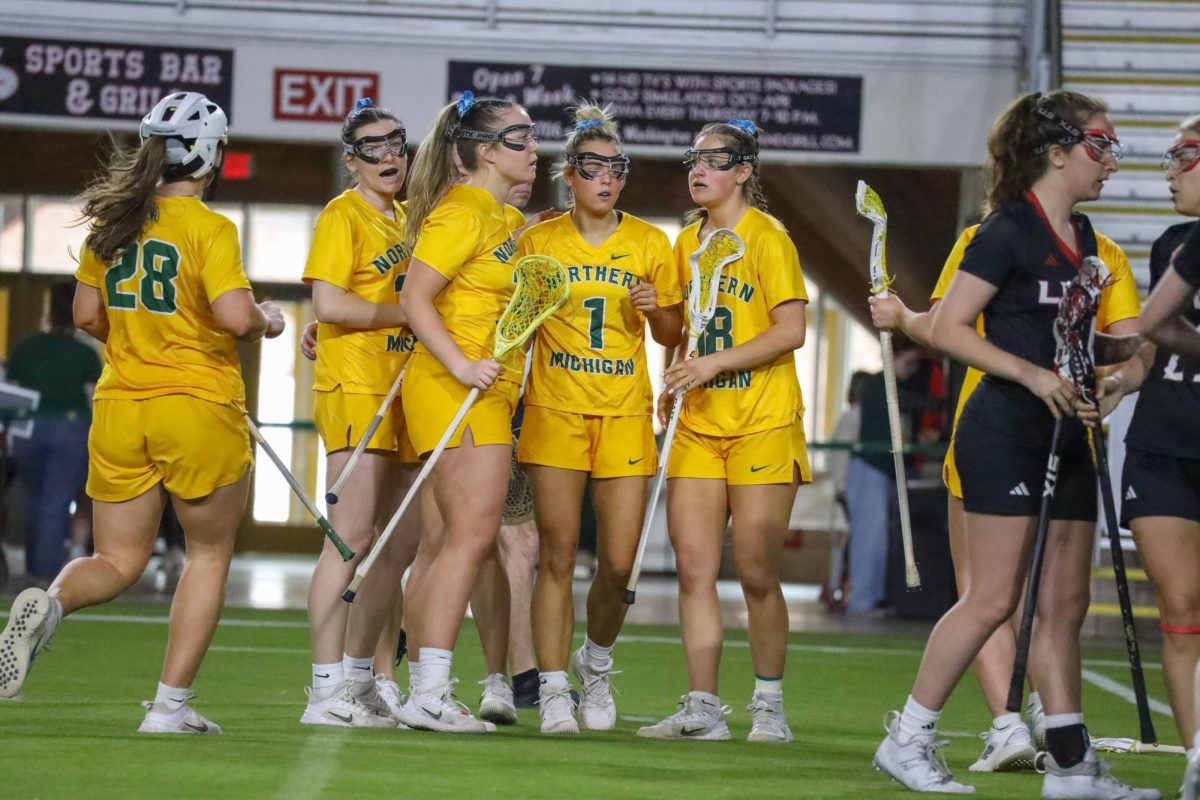Nothing brings a college institution or community together more so than athletics and sporting events, and which sporting events a college chooses to take part in becomes the grey area where questions and arguments may arise.
Northern Michigan University is currently enrolled in 12 varsity athletic events: five men’s sports and seven women’s.
Two of the sports, basketball and Nordic skiing, are shared events. Most in which NMU participates are NCAA Division II qualified, with the exception of the men’s hockey team and ski teams.
NMU athletic director Ken Godfrey sees the return sports bring to a program such as Northern.
“There are a lot of advantages for certain sports,” he said. “They bring a lot of students in. There’s also studies done that say every student athlete that comes to school brings another two to three with them.”
Talks of adding competitive events like a men’s track team, women’s softball, or lacrosse goes much deeper than finding the funding for the athletic event.
Adding or dropping an athletic event at a university involves numerous factors, according to NMU president Les Wong. Scheduling, conference restrictions, Title IX, and student interest can all be restrictions holding down certain sports from being added.
“You do have to have roster sizes that represent your enrollment by gender on campus,” Wong said. “Ultimately, if you add men’s track, you might have to add two women’s sports just to equal the numbers.”
Northern currently has a student body enrollment which is nearly 55 percent women and 45 percent men, so the athletic department must represent those numbers.
Title IX of the Educational Amendments of 1972 was implemented to ban sex discrimination in schools, either academics or athletics.
Title IX gives schools the freedom to choose sports based on student body interest, geographic influences, budget restraints and gender ratio.
To be a beneficiary of federal funds, a school must show compliance with any of the three prongs set into Title IX. The first, athletic opportunities provided be in a proportion to the number of students enrolled; the second, exhibit increased athletic opportunities for the sex that is under represented; third, the under represented sex interest together with ability should be accommodated wholly and effectively.
According to Godfrey, NMU is in compliance with all of Title IX’s requirements for federal funding.
Over the years, many have argued that Title IX be to blame of sports going under at certain places because of the restrictions. Godfrey thinks this is just a scapegoat tactic.
“We do meet and will always meet the gender equity of it,” Godfrey said. “Over the years, people have cut programs and blamed Title IX. I don’t think it was really justified. I’m not saying it didn’t play a factor in things. But I think sometimes it was an easy way to make a decision.”
Conference limitations are another issue that deal with holding back certain sports. NMU currently has a club men’s lacrosse team and has gained interest over the years of the possibility of it becoming a varsity sport. More than half of the schools containing Division I and II lacrosse programs are located on the East Coast. Finding a conference in the Michigan area would be near impossible.
“If we had lacrosse who are we going to schedule those contests with? There’s a lot of club sports, but not a lot of intercollegiate in this area,” Godfrey said.
It’s no secret that NMU and Marquette are in unique situations in the state of Michigan being so far north. Currently NMU resides in the GLIAC home to schools of, anywhere from Michigan and Ohio, to Indiana.
Travel cost to and from athletic events, even in conference, can be quite a costly affair. In the GLIAC, the shortest distance outside of the Upper Peninsula that NMU has to travel to is Northwood, located in Midland, Michigan, a distance of 340 miles.
The shortest distance a team like Northwood has to travel in a given season is 16 miles to Saginaw Valley State University, in University Center Mich.
Having sports in which men’s and women’s teams can travel on the same bus can also be an important aspect. Sports such as basketball and skiing are examples.
The NMU swim team, which only offers women’s, finds problems in teams that have both a men’s and women’s team and doesn’t want to send only a women’s team to compete.
“Should we have a men’s and women’s swimming team to make it more cost effective?” Godfrey said. “It’s not that schools don’t want to travel to NMU, it’s just cost prohibited.”
NMU, which currently owns a golf course, holds no home meets for its men’s team and must travel as far as Kentucky to compete. As for funding and revenue concerns, however, Wong sees the golf team as a non-issue.
“I think men’s golf for us since the roster size is pretty small and travel cost and schedule is pretty small I think we break pretty even,” Wong said. “The issue is, regardless of cost, we need to have men’s golf simply to comply with federal regulations.”
When it comes down to deciding which sports the athletic program can offer to students, perhaps no other aspect is more important than the feedback from the student body.
The future of NMU athletics may find some new additions and perhaps some cutbacks.
“We’re looking at everything. There’s no closed doors,” Godfrey said. “Just about any sport that our conference offers, we’re looking at and considering.”

























